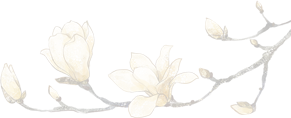- 时间点:
- 时 分 秒 当前视频时间点
- 问题:
-
- 选项一
设为正确答案
新增选项 - 选项一
- 正确跳转时间:
- 时 分 秒 同锚点时间
- 错误跳转时间:
- 时 分 秒 同锚点时间




恭喜你,回答正确~
很遗憾,回答错误~
正确答案: ,您可以



我们这个团队是针对北湖区大山里的乡村中学---芙蓉村中学八年级(88)班学生而备的。
芙蓉中学的一个普遍现象就是学生开口说英语少,操练少,学生学会了只听不说的“哑巴英语”。因而,学生运用英语的能力依然很差,“听不懂、说不出、读不快、写不好”等现象普遍存在。该班总共34人,20多个男孩子,占了全班的三分之二。2016年下期期末考试班平均成绩没有超过50分,100分以上的只有一个,有几个女生对英语稍感趣味。众所周知八年级学生的英语学习两极分化更加突出,个别优秀生学习有滋有味成绩更优,但大部分后进生几乎没有学习英语的欲望,对待英语这门学科的态度是听之任之,也可以说他们对英语几乎放弃学习了。因此激发学生学英语的兴趣提高本班学生听课效果是此节课的教学目标。本单元重点时态是现在完成时,虽然在前一个单元(第八单元)学生已经接触了,有所了解,但对其结构和含义还未完全掌握,对其用法还较模糊,而且大部分学生因为基础差,人称和have相应的动词变化形式运用的不够正确,掌握还不够熟练。
The multimedia.
The blackboard.
Knowledge Objects
Learn and master the following words , phrases and expressions.
Words:amusement neither never
Phrases:water park amusement park art museum history museum science museum nature museum
Expressions: Have/Has ... ever been to ...? Yes, ...have/has. No,...have/hasn't.
I have never been to .... Me neither.
Ability Objects
a.Do some listening to train the students' listening ability..
b.Do some speaking to practise expressing their own or others' past experiences .
Moral Objects
By talking about their own or others' past experiences,the students will know their hometown and China better, which will arouse the students to love and protect the hometown and our motherland .
Improve the students' listening ability.
Master the important words,phrases and expressions.
Make the students be free to talk about their past experiences.
Communicative Language Teaching Method。
Task-based Language Teaching Method.
Students-oriented Teaching Method.
During the break between the classes, T plays the song BINGO for the students.When the bell for class rings , the teacher turn off the multimedia.(利用课前播放BINGO歌一分钟,让学生听英语歌曲热身可以使他们迅速进入学习英语的环境和状态。)
T:Hello,everyone.
Ss:Hello, Mz Yang.
T:Do you know the song?
Ss: Sorry , I don't know.
T:It's BINGO song. Have you ever listened to it? (T writes" listen "and" listened "on the left blackboard)
Ss:No, we haven't.
T:Look at the screen, here are three pictures.Which verb can be used to match with them.(Show a vedio of BINGO,a movie and a book on the screen.)
S1: Picture1,"listen to "can be used.
T:Good, please tell me how to spell "listen "and "listened".
S1:L-I-S-T-E-N,listen. L-I-S-T-E-N-E-D,listened.
T:Have you ever listened to the song?
S1:No, I haven't.I have never listened to the song.(Help the student to say the sentence with never.)
Then in the same way to talk about the other things.This way is to help the students to revise the three verbs (listen ,watch and read) which are in Unit 8 and try to answer the general question in the present perfect tense with Yes or No.
1. Present the targe expressions by showing a beautiful place named Yangtian Lake, which the students live nearby.They are familiar with the place.Then allow the class to guess the Chinese meaning of this sentence"Have you ever been to Yangtian Lake?
T: Where is it? Do you like it ? Have you ever been to Yangtian Lake?(T Writes the word" be " below "read"on the blackboard,and let students guess the past participle of it.)
S1: It's Yangtian Lake.Yes, I like it very much.I don't know the Chinese meaning of the last question.
T: OK.Let me help you.Now please read the last question for me.
Ss: Have you ever been to Yangtian Lake?
T: Yes, I have.It's very beautiful.(T answers with a smile and shows another photo of visiting the place)
How about you?= Have you ever been to Yangtian Lake?
Ss:Yes, I have.
T: Can you get the Chinese meaning?
Ss: Yes, I can.你去过仰天湖吗?
T:Good.You'r right.(T writes down the expressions on the mid-blackboard.)
Here're two pictures about different places.Make conversations in pair.
2.Make a short summary.(It helps the students to know the structure clearer.)
3.T points at a student and ask the others :Has he/she ever been to ...? T helps the students to answer:Yes,he/she has./No, he/she hasn't.
4.Pairwork Allow the students to talk about the place which they have been to is very interesting.
5.Fill in the blanks.(It tests whether the students master the uses of have/has and so/neither.)
1.T shows the picture of Nanta Park and says: Welcome to our city Chenzhou. Because Nanta Park is a water park and an amusement park.It's very intersting.T teaches the two important phrases: a water park and an amusement park.
2.T shows the different kinds ofplaces, teaches and read the other important phrases:a zoo,a science/history/space/nature museum,an art museum.
3.Play the Challenge Memory Game.(It helps the student to remember the phrases better and quickly).
Listen to 1b for the first time and allow the students try to get the places.For the second time,let them fill in the boxes.For the third time, check the answers together.
Devide the class into 5 groups.Let them talk about Claudia and Sarah.At last ,allow two students to report their reports .
Test and consodate the students' knowledge .
Unit 9 Have you ever been to a museum?
listen -listened have/has + v-ed
watch - watched have/has been to+sp. 曾经去过某地
read[ri:d]-[red] Have you ever been to ...? Yes, I have. / No, I haven't.
be-been Has he/she ever been to ...? Yes, he/she has. / No, he/she hasn't.
Me too.= So have I.= I have been to ...,too.
Me neither.= Neither have I= I haven't been to ...,either.
设为正确答案